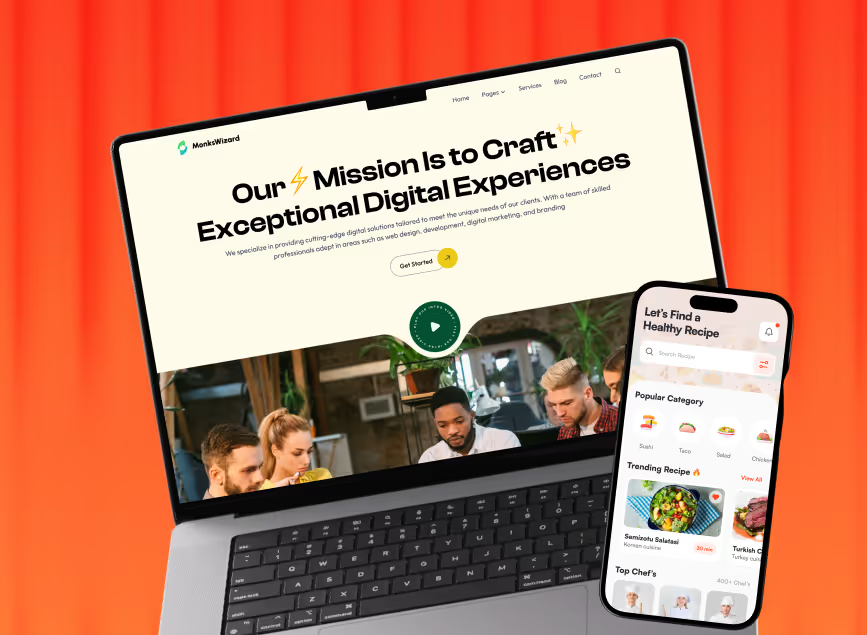
Key Takeaways
- UX testing exposes real usability issues before product launch.
- It helps designers understand user behavior, needs, and frustrations.
- Testing ensures smooth functionality and builds user trust.
- Fixing issues early saves costs and boosts user satisfaction.
- A better user experience increases loyalty, revenue, and brand value.
In 2026, it will be nearly impossible for a design to be successful with prioritizing user experience (UX) testing. With the expansion of competitors, user expectations rise, and ensuring your product meets these demands is essential. That’s why you can’t neglect the importance of UX testing.
UX testing is about observing real users interacting with your product to expose valuable insights into usability, functionality, and overall user satisfaction. This approach helps identify issues early so that we can refine our design, enhance user engagement, and reduce costly post-launch fixes.
However, if you keep overlooking this process, this is the right place you should be. Learn about the benefits of UX testing before you neglect it on your next project.
What Is User Experience Testing?
User experience testing is a process that evaluates how easily users can interact with a digital product like a website or an application. To say it a little more openly, It’s like putting your product to the ultimate user-friendliness test. It’s where real users interact with your website or app, and you can see how it actually works.

In this process, a designer watches a real user navigate through tasks and see firsthand what works seamlessly and what causes confusion. This direct observation exposes valuable insights into how users think and behave.
When designers get these insights early on, it helps them fine-tune their design to be intuitive and efficient. It’s about ensuring every button, menu, and instruction makes sense and feels natural. Usability testing isn’t just about finding problems; it’s a proactive step toward creating a product that delights users from the first click.
Importance of UX Testing for Your Product
Now, let’s come to the core point of why UX testing matters in product design. Actually, there are lots of benefits. You should learn about them all so that you understand where and why to focus properly.
1. Understand Your Target Users
UX testing helps you understand your target users better. You can see real users interact with your product. It gives you valuable insights into their behaviors, preferences, and user pain points.

Moreover, you can learn how they think and what they need. Also, it’ll tell you how they navigate your design. This useful knowledge can help you shape your design to meet their specific needs.
So, when you know your users well, you will be able to create more effective designs. Furthermore, it nurtures a stronger connection between your product and its audience.
2. Ensure Designs Function as Intended
One of the major goals of UX testing is to confirm your designs function as intended. You must verify that all features and elements of your product work seamlessly. If you test with real users, it can help you see how they interact with different aspects of your design.
Also, it helps you find technical glitches, confusing interfaces, or functionality issues that you might miss during the design phase. If you can confirm that your design works correctly, it will improve user satisfaction.
Moreover, it will greatly build trust in your product. Remember, real users love to engage with a product that performs reliably.
3. Spot Problems with the User Experience
UX testing is fundamental for spotting problems that could negatively impact the user experience. These issues can include minor inconveniences to significant obstacles that hinder usability.
While testing, users provide direct feedback on their experience. It highlights areas of frustration or confusion from the user’s end. This type of feedback is invaluable. It lets you mark problems before they escalate.
Whether it’s a complicated navigation system or a non-intuitive interface, identifying these issues early can save your work. Thus you can resolve the detected problems, as well as prevent user dissatisfaction.
If you continuously refine the user experience, you will get a positive outcome. Also, it will generate more user engagement and retention.
4. Identify Areas for Improvement
UX testing doesn’t just help you spot problems. It also highlights areas for improvement. Even if your product functions well, there’s always room for enhancement that you may not notice.

Testing helps you get opportunities to optimize the user experience until it reaches its intended goal. It’s about simplifying complex processes, adding helpful features, or improving visual design elements.
This proactive approach keeps your product competitive and shows users that you value their feedback. It’ll also prove your dedication to continually improving their experience.
5. Boost Customer Loyalty and Retention
A positive user experience can significantly boost customer loyalty and retention. When users find your product easy to use, they’re more likely to return and continue using it. UX testing helps ensure that your product meets these criteria.
For that, it identifies possible issues that make users leave the site faster. When you’ll get all these issues and fix them instantly, the platform will start getting more happy users. And, you must know that happy users are also more likely to recommend your product to others.
This way, user testing helps expand your customer base. It ultimately helps you design a product that not just attracts new users but also keeps them coming back. This loyalty later results in long-term success and sustainability for your product.
6. Contribute to a Positive Brand Reputation
A product’s user experience plays a significant role in shaping the brand’s reputation. A well-designed, user-friendly product makes users consider the product positively as the brand. It is like proof of your commitment to quality and customer satisfaction.
UX testing helps you achieve user loyalty in a proven way. It ensures that your product meets high standards of usability and functionality. As a result, the product will have more satisfied users and less turn-around rate.
Conversely, a poor user experience can damage your reputation and lead to a negative impact. So, it’s another reason you should prioritize UX testing to build a strong, positive brand reputation that attracts and retains loyal customers.
7. Ensure Higher Conversion Rates, Sales, and Revenue
Effective UX testing can directly impact your product’s conversion rates, sales, and revenue. It identifies usability issues significantly. This way, it helps you create a smooth and efficient user journey.

This approach usually increases the user’s potential for taking the next action. Those actions can be making a purchase, signing up for a service, and so on. A smooth user experience also reduces friction and motivates users to engage deeply with your product.
As a consequence, you will see elevated conversion rates along with increased sales. So, it is true that investing in UX testing is always a good idea. Also, it improves the user experience and greatly contributes to the financial success of your product.
8. Help Secure a Brand’s Competitive Edge in the Market
In this competitive market, a superior user experience can give your product an edge over the competition. UX testing is essential for maintaining this part as well.
It also makes you continuously optimize the product based on user feedback. Keep in mind that you must stay ahead of industry trends and user expectations. This approach confirms that your product remains relevant and appealing to your target audience.
A product that consistently delivers a top-notch user experience is bound to attract users. It also gives you a significant advantage over competitors.

FAQs
What is the main goal of UX testing?
The main goal of UX testing is to identify and solve all possible usability issues. It’s for enhancing the overall user experience. This testing method ensures that the product is intuitive, efficient, and satisfying for users. Thus, it helps increase user engagement, satisfaction, and retention.
What is the difference between user testing and UX testing?
User testing focuses on how real users interact with a product to identify usability issues. UX testing, however, is all about a broader scope that focuses on user testing to evaluate the overall user experience.
How much does UX testing cost?
The cost of UX testing can be different based on the project’s scope, complexity, and methods. It can cost from a few hundred to several thousand dollars. The costs also depend on factors like participant recruitment, testing tools, and the extent of the analysis.
End Note
Creating and maintaining a successful product in 2026 is not easy, indeed, possible without proper UX testing. It helps designers understand the target users, ensure designs function as intended, spot problems with the user experience, and identify areas for improvement. All these aspects finally result in higher engagement, retention, and traffic.
That’s why investing in UX testing is necessary. It enhances the quality of your product but also ensures its long-term success in the competitive marketplace.

.svg)






.avif)
.avif)
.avif)
.avif)


.avif)
.avif)
.avif)
.avif)


.avif)




